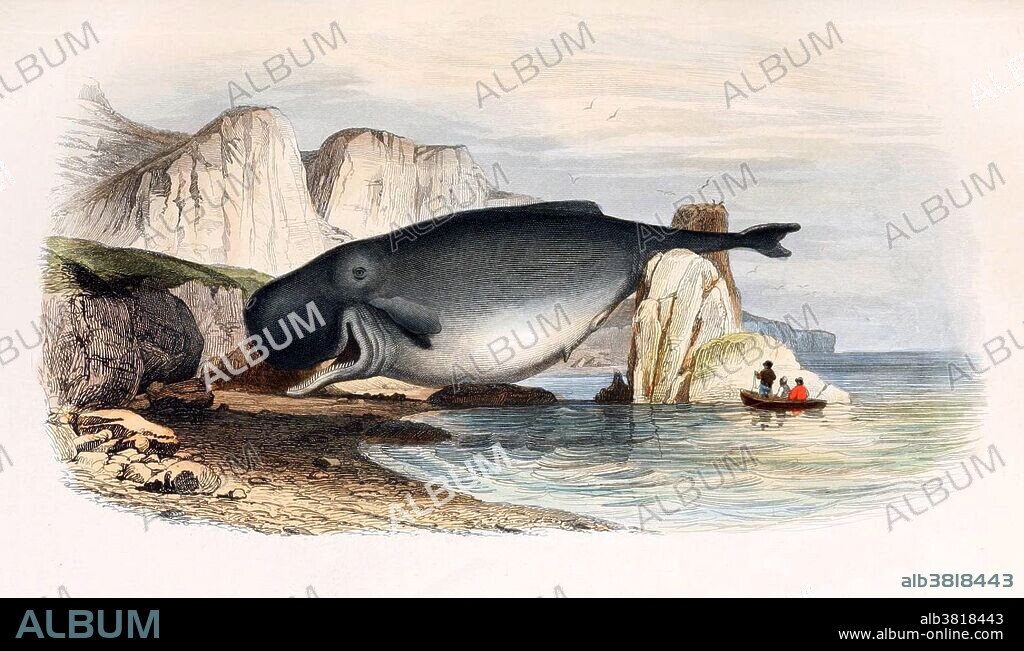alb3818443
Sperm Whale, 19th Century

|
Zu einem anderen Lightbox hinzufügen |
|
Zu einem anderen Lightbox hinzufügen |



Haben Sie bereits ein Konto? Anmelden
Sie haben kein Konto? Registrieren
Dieses Bild kaufen.
Nutzung auswählen:

Titel:
Sperm Whale, 19th Century
Untertitel:
Siehe automatische Übersetzung
The sperm whale (Physeter macrocephalus), or cachalot, is the largest of the toothed whales and the largest toothed predator. It is the only living member of genus Physeter. Mature males average at 52 feet in length but some may reach 67 feet, with the head representing up to 1/3 of the animal's length. The sperm whale can be found anywhere in the open ocean. From the early 18th century through the late 20th the species was a prime target of whalers. The head of the whale contains a liquid wax called spermaceti, from which the whale derives its name. Spermaceti was used in lubricants, oil lamps, and candles. Ambergris, a waste product from its digestive system, is still used as a fixative in perfumes. Whale is the common name for various marine mammals of the order Cetacea. The term whale sometimes refers to all cetaceans, but more often it excludes dolphins and porpoises, which belong to the suborder Odontoceti (toothed whales). This suborder includes the sperm whale, killer whale, pilot whale, and beluga whale. All cetaceans have forelimbs modified as fins, a tail with horizontal flukes, and nasal openings (blowholes) on top of the head. Whales inhabit all the world's oceans and number in the millions. Human hunting of whales from the 17th century until 1986 radically reduced the populations of some whale species. Histoire naturelle de Lacépède by Georges Cuvier and A.G. Desmarest, 1876-1881.
Bildnachweis:
Album / Science Source / Biodiversity Heritage Library
Freigaben (Releases):
Model: Nein - Eigentum: Nein
Rechtefragen?
Rechtefragen?
Bildgröße:
4200 x 2454 px | 29.5 MB
Druckgröße:
35.6 x 20.8 cm | 14.0 x 8.2 in (300 dpi)
Schlüsselwörter:
 Pinterest
Pinterest Twitter
Twitter Facebook
Facebook Link kopieren
Link kopieren Email
Email
